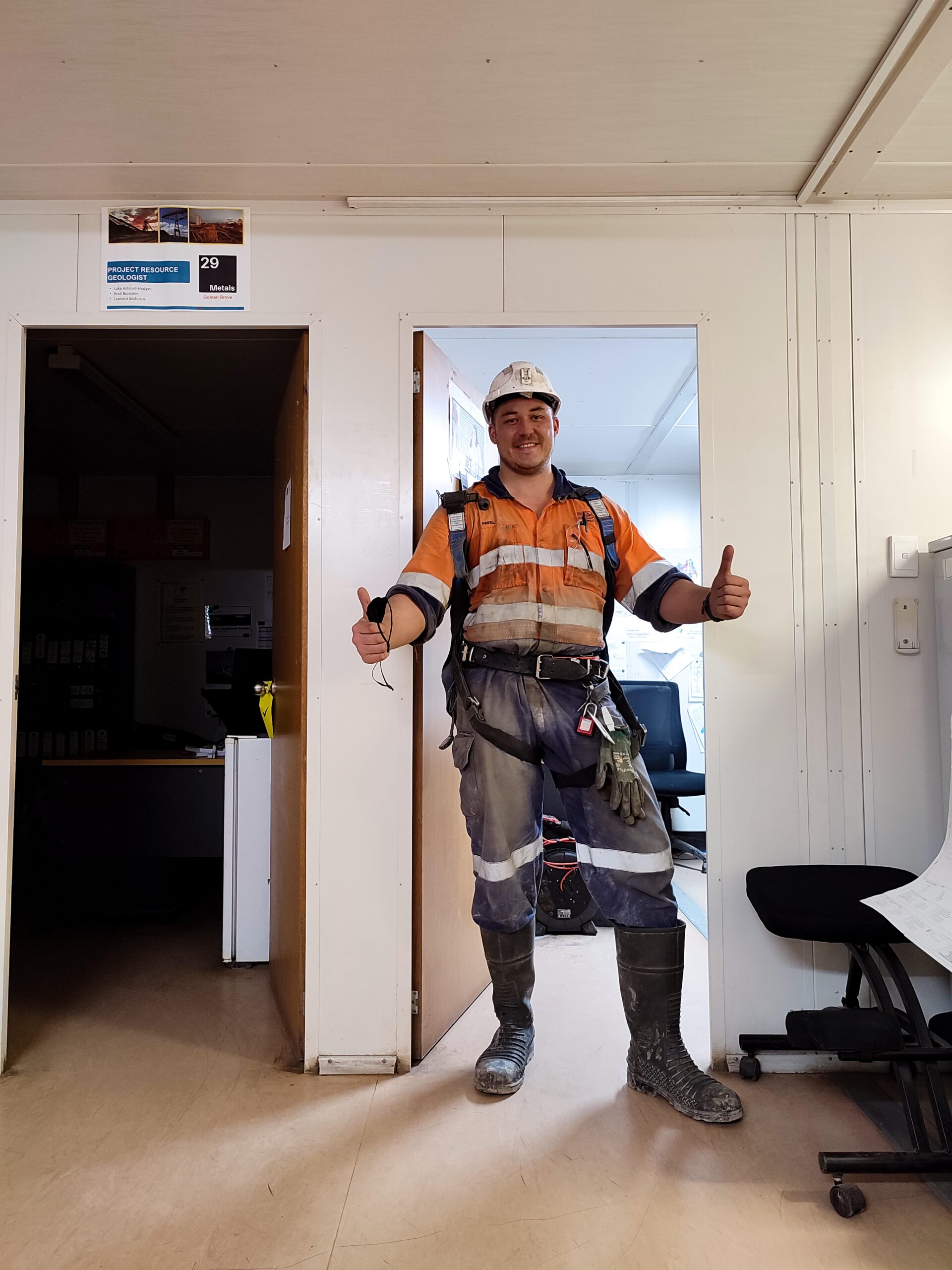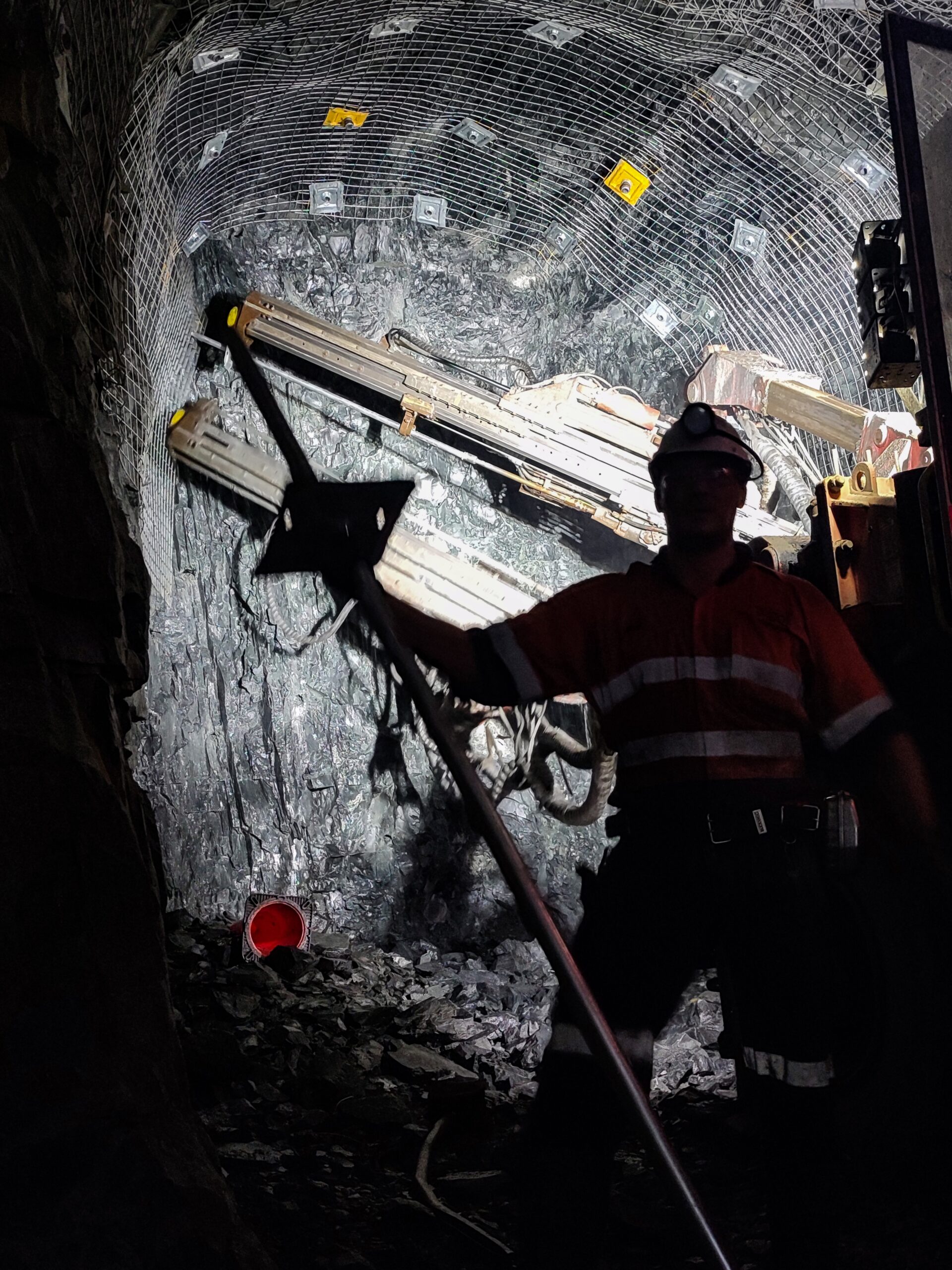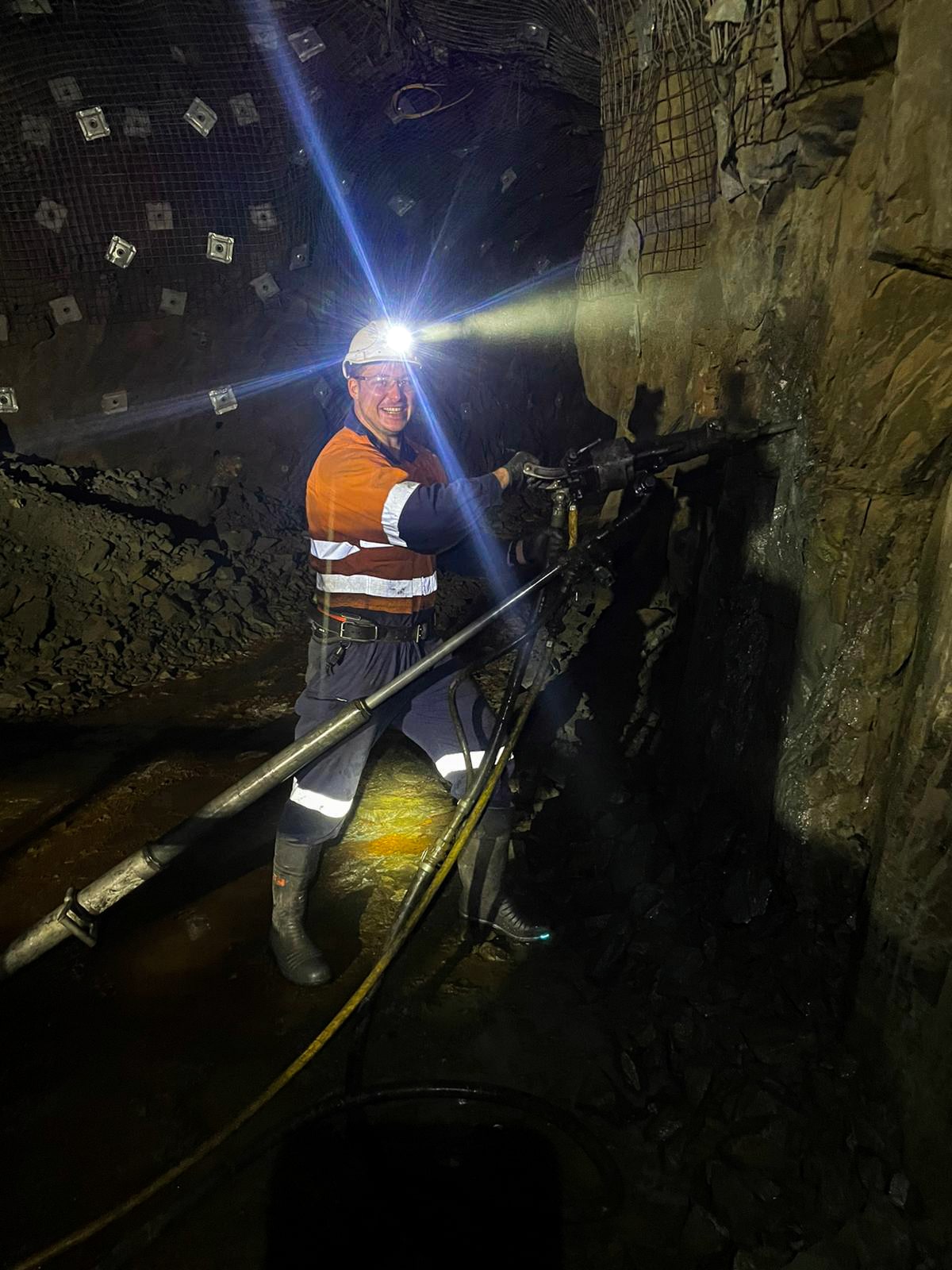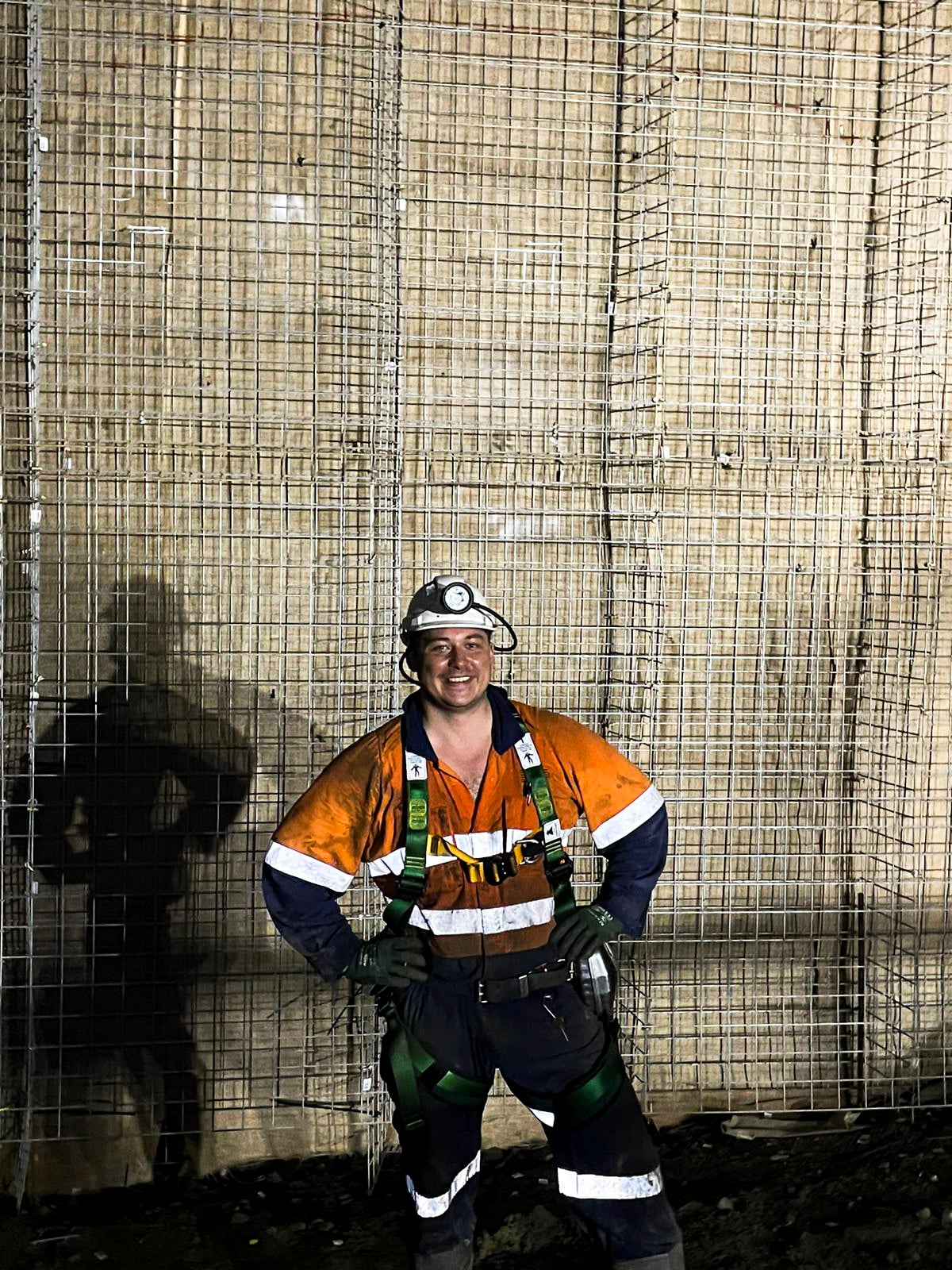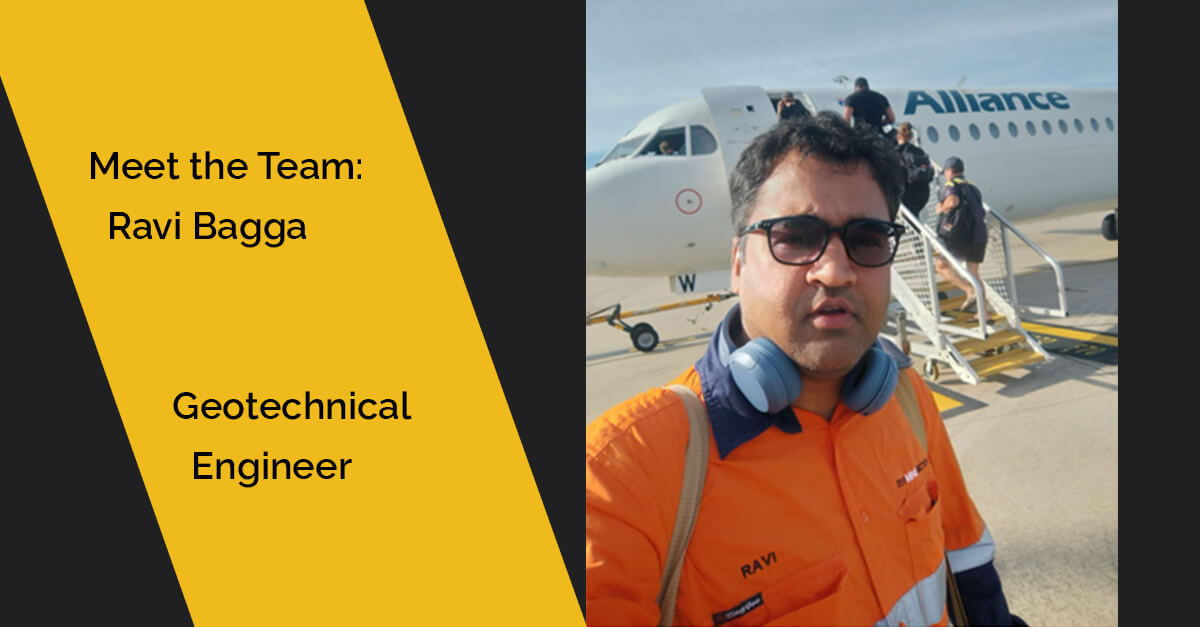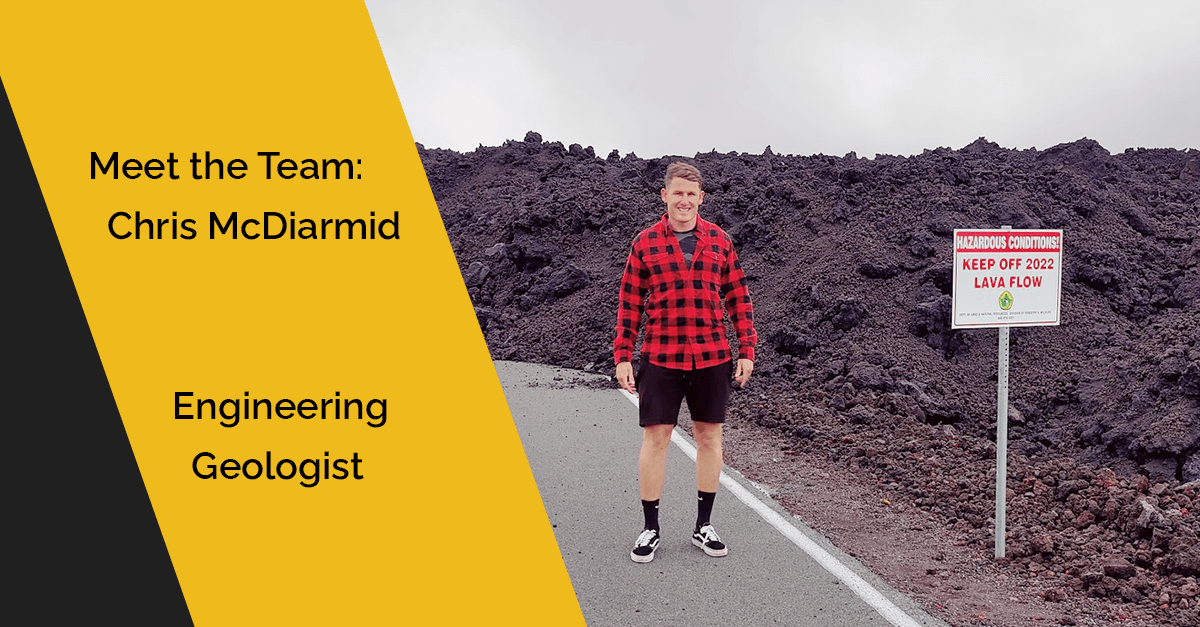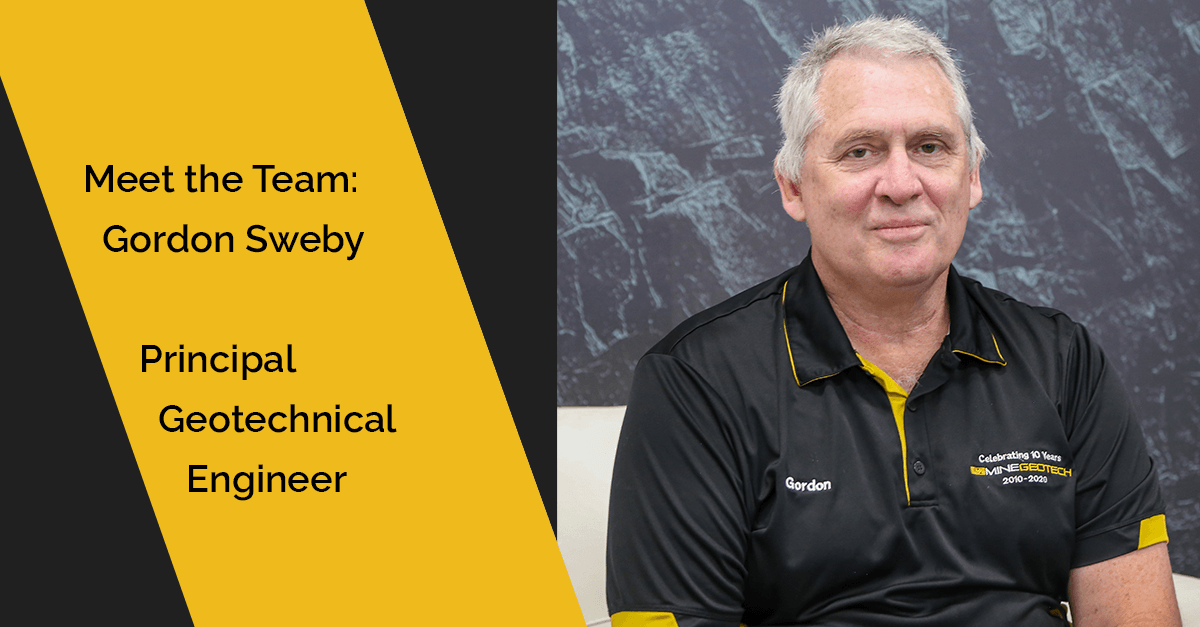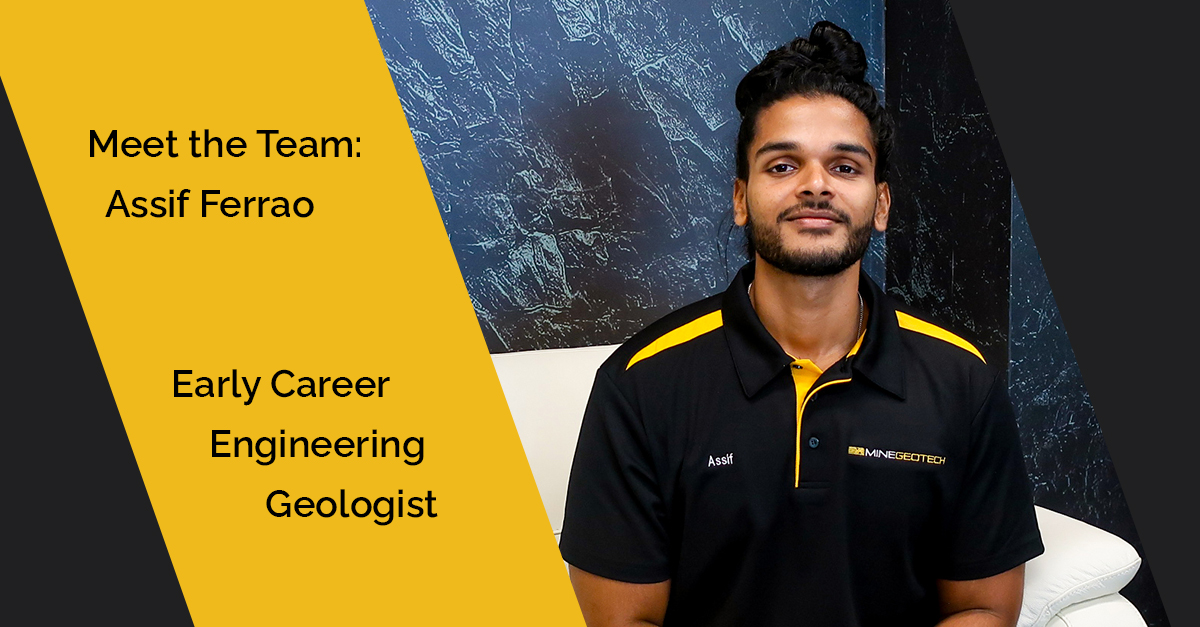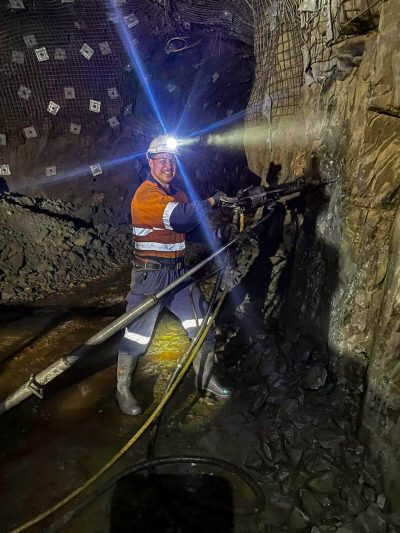
This is Pavel Olegovich Novomodny, one of our Geotechnical Engineers who has completed our Underground Time training program as part of his Early Career/Junior Geotechnical Engineer development over an eight-week period during the winter of 2022.
As part of the training, Pavel was seconded to our client, 29 Metals, and third-party contractors Byrnecut, Jetcrete and Murchinson Mining Services (MMS) on site to spend time working with various crews in order to gain firsthand experience of the dynamic underground environment and the day-to-day functioning of the teams.
Read on to find out what else Pavel learned during his training.
How was the MineGeoTech (MGT) underground time program for junior geotechnical engineers structured?
MGT has brought this in as part of their junior graduate training program. I was given a program scope and objectives to follow and had the flexibility to arrange more time with crews that I thought would be most beneficial from a geotechnical perspective. The program specified the teams I am required to spend time with and activities I should observe and, if possible, to participate in. At the end of each shift, I recorded my experience in a journal.
Being a Nipper, what was your experience like?
Hardcore. I believe this is one of the most labor-intensive jobs at the mine and it takes a special kind of person to turn up each day to do this job when you’ve been slogged the day before. These people are the workhorses of the mine and have various responsibilities including set up headings (including the ground support), delivering consumables, off-siding jumbos and some who hold valid tickets form part of the re-entry crew.
They cover the most ground during the shift and their work can also be logistically complex as they have to manage their day around the daily tasks and immediate priorities, so their communication skills on the radio have to be on point. They are the most susceptible to fatigue and injury. Working in this crew brought more awareness for the use of correct PPE and manual handling techniques.
Getting to join the Service Crew, what were some key learnings?
Byrnecut Service Crew teams are responsible for installing and maintaining vital underground infrastructure ranging from ventilation, air and water services to power and comms cables as well as ground support schemes thus contributing to the overall safety and productivity of the mine.
The majority of the work is done utilising an Integrated Tool Carrier (IT) which requires a ticket to operate and a working at heights ticket to be able to work in the IT basket. I was part of the team and participated in a variety of tasks including the replacement of sump pumps, extending and removal of services such as vent and jumbo cables as well as installation of fans and ground support schemes.
The highlight of working with the service crew was participating in the installation, then plating and tensioning of cable bolts. The experience made me appreciate how much time, effort and labour goes into it and the intricacies involved in achieving the desired result.
Dust, sweat and tears. End of shift with service crew.
What did you observe when spending time with the Shotcrete Crew?
I didn’t get my hands dirty on this one as the crew has specific training to be able to operate equipment and certain chemicals. However, I off-sided the Jetcrete crew for 4 days and got to see the process from beginning to end including preparation of the mixture, logistics of transportation, hydroscaling and spraying of new headings, as well as spraying of rehab areas.
It was interesting to see the batch plant in operation, storage, and handling of materials and the QAQC process such as slump test and sample prep. It has helped me to understand the processes behind the monthly QAQC numbers and the factors that can impact them.
Jumping into a Jumbo, what insights did you gather?
As part of the program, I spent time off-siding the Byrnecut jumbo and observing drilling and ground support installation from the cab. The miners using these robust machines rely on Geotechnical Engineers and Geologists that help them understand the geology they encounter during face boring and bolting as the process of drilling is technically challenging due to variations in ground conditions and rock hardness.
A good operator adjusts their drilling techniques accordingly. Witnessing the installation of various ground support scheme components has made me appreciate the intricacies involved in getting the job done to a standard specified by a Geotechnical Engineer. This included QAQC checks like drill bit wear, which can impact the performance of split set rock bolts. The miners using these machines are highly experienced and “can feel the ground”. It was also interesting to see the capabilities and limitations of the machines.
Throwing bolts.
Shadowing the Ventilation Crew and Engineers, what did you learn?
Ventilation is a critical aspect of mine safety, particularly in deep underground mines where the impact of air pollutants and temperatures is high. I shadowed the 29 Metals ventilation team and observed how the technical team collects data to calibrate its VentSim model to ensure fresh air is circulated in the mine. They are then able to identify areas of the mine that need additional fans or Drop Board Regulator (DBR) walls built. Underground, I observed the installation of the underground fans and participated in the construction of vent walls.
How was your experience working with other Technical Services Teams?
I’ve spent several days working with the 29 Metals long-term and short-term planning teams, geology, and survey teams.
Spending time with the mine planning team I observed the process of designing mining layouts and the generation of detailed mine activity plans that outline the sequence of mining activities and equipment utilisation to extract minerals in a safe and efficient way. As part of the process, the mine planning team would consult the Geotechnical team to help them optimise stope extraction and development strategies.
I accompanied the geology team on their inspection rounds and participated in routine face and structural mapping of the ore drives. Following the data collection exercise, I observed how the data is manipulated to create a representative block model of the mine’s ore reserves in a particular area. I saw the mine survey team in action setting out drill collar locations and carrying out Cavity Monitoring System (CMS) and Cavity Auto-scanning Laser System (C-ALS) surveys.
What new perspectives did you gain from the Mine Services Team?
The Murchinson Mine Services (MMS) team were responsible for the construction of vent walls and paste walls. I had a go at using the air leg, which was fun, and participated in the construction of walls. The crews often operate in areas that had sustained rock mass damage due to stress redistribution or equipment damage to the ground support scheme during ore extraction activities, or in areas where ground support was corroded.
From a safety perspective, it was good to see the communication between the mine service crew and the geotechnical engineers who would action hazards flagged up by the crews. I also got to see the process of Cemented Hydraulic Fill (CHF) reticulation installation and demobilisation and understand the effort required to backfill stopes which is a critical part of maintaining stope sequence in high-stress mines.
MMS guys said they’ve never seen anyone so happy using the airleg.
Spending time with the Backfill Tech Team, what did you observe?
The 29 Metals Geotechnical team was in charge of the backfill operations on site. However, an established backfill technician team carried out the data collection and monitoring aspect of the operation. While working with the backfill tech I observed the process of CHF sample collection, sample storage and sample testing. This is the practical side to the data presented on backfill cure strengths and if the mix is performing to expectations.
CHF wall built.
Being around the Drill and Blast Technical Services Team, what problems did they come across?
I shadowed the 29 Metals drill and blast technical services team and observed how blast plans are put together. It was good to see how the process of stope note comes together and how geotechnical recommendations are taken into account when designing a blast pattern such as stand-off distance and reduction of powder factor to preserve a stope brow as well as geotechnical input into a shape extraction strategy.
Underground, I off-sided a development charge-up crew and observed production crews charge a stope. It was good to see how the technical team helped to solve operational problems faced by the underground charge-up teams often relaying instructions over the radio to adjust powder factor or stemming if blocked holes or hole deviation was encountered.
What is the most challenging task that you carried out?
Blast hole prep. This is a process where an air hose is inserted into a vertical blast hole and the hole is blown out, with pressurised air, of any debris that is blocking the hole. It is a challenging dusty job with scats falling out of the hole. Apart from falling debris, the rock dust contained lead, so respiratory PPE was worn by crews and they underwent regular blood testing to monitor their exposure to this element.
How has your experience working underground with various crews changed the way you carry out your daily tasks?
I have a better understanding of how my daily decisions affect the mining schedule and the crews working underground. For instance, when specifying rehab plans, I now realise the labour and planning that goes into installing a single cable bolt and it makes me consider if that extra cable bolt is necessary or if could I utilise a different reinforcement system in its place. The experience also made the plans I produce better – having worked with the crews I know how to present clear plans and what extra instructions I need to specify to minimise any confusion.
As part of the Technical Services Team, safe efficient and robust designs are a key deliverable. While working with the crews underground, I got to see how the processes are managed and designs are implemented to be both safe and productive.
What do you think you have gained from doing your underground time?
Perspective. This experience helped me gain a holistic overview of how the mine functions and how every decision comes together to meet production and development goals. I also participated in the work carried out underground and got to experience the mechanics of some critical geotechnical tasks like ground support scheme installation. In mines, operations take place at a different risk threshold compared to other industries because of the ever-changing and dynamic environment that the mine sees during its life.
Underground mining is inherently complex due to its reliance on explosives, subterranean activity and the 3D nature of work locations. It can be a difficult and challenging environment that exposes miners to a multitude of problems and risks, some of which can be life-threatening. It’s important to understand these issues to appreciate the hazards of underground mining. But it is also very rewarding in safely achieve the goals and targets and develop the technical skills to support the operation.
Coming from a civil engineering background, I believe this experience has given me excellent exposure to mining operations and has given context to the skills I apply in the office.
Curious to learn more about our junior geotechnical engineering program?
Keep up with our junior geotechs >
Speak with our Team >
Careers at MGT >
The MGT Way >

